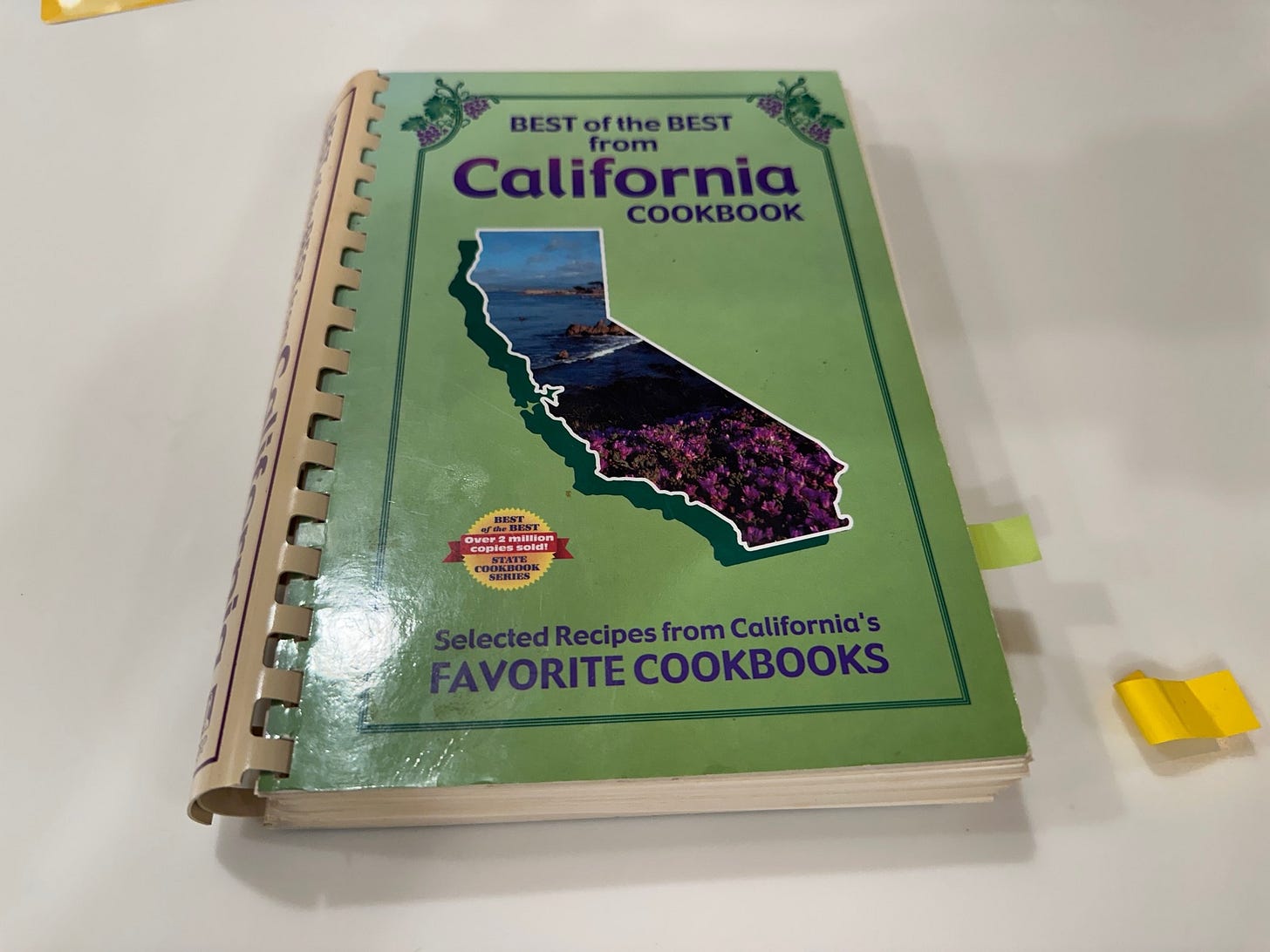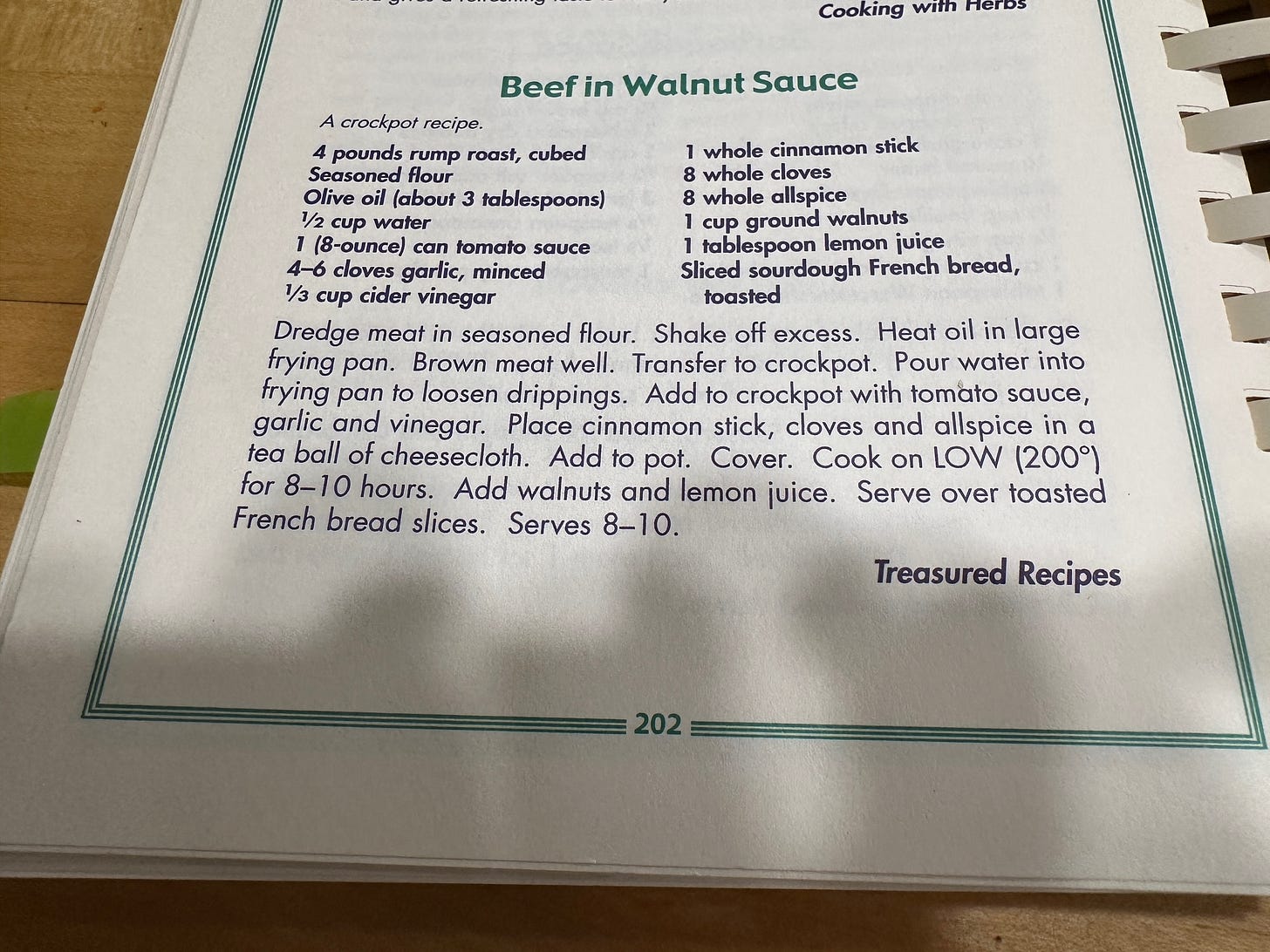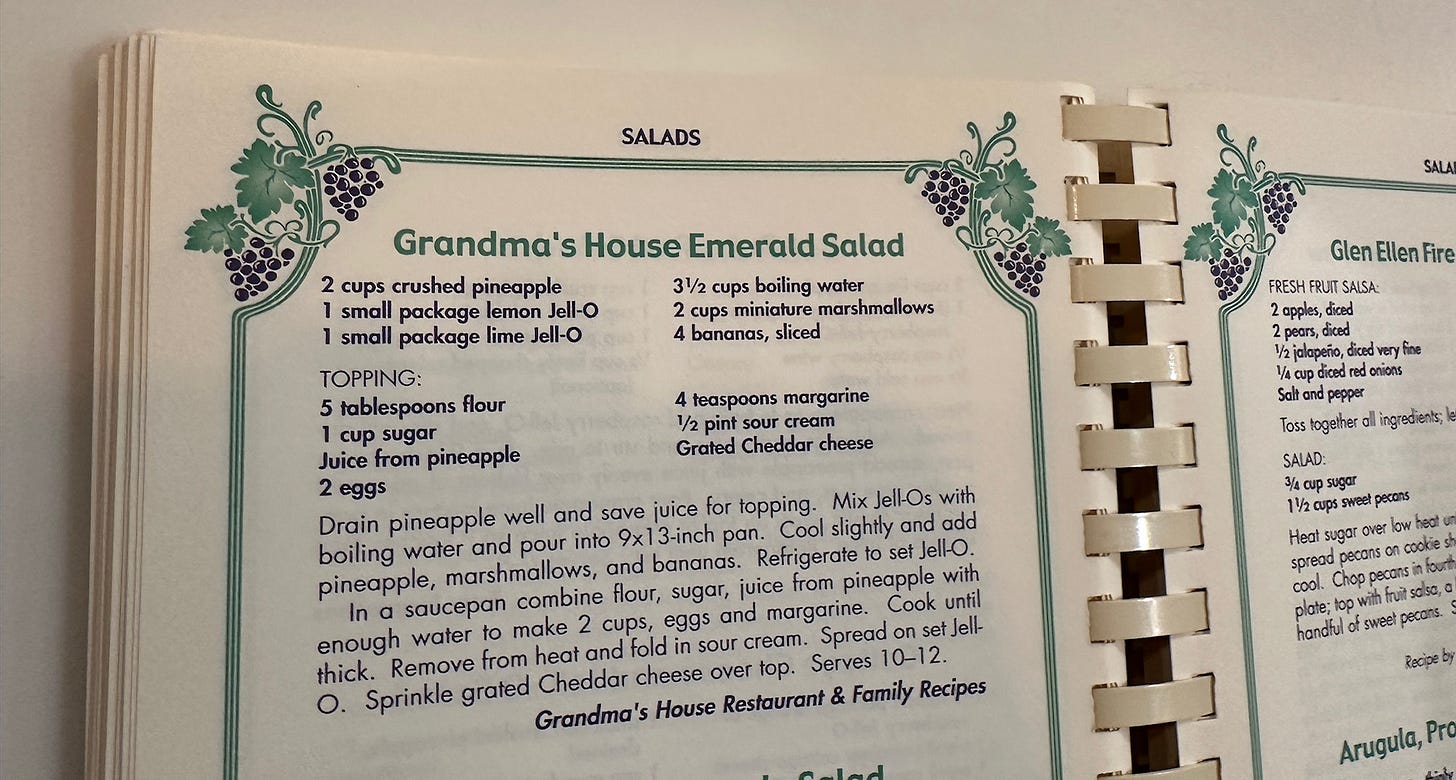I’ve now spent a third of my life living in the US. Though I know I shall never be a native here, I’m by this point at least to the manner… if not technically born, then certainly long-term adopted. But still every now and then something catches me out, making me feel wrong-footed and English, and often it’s traditional foods — especially those served around major festivals like Thanksgiving or Christmas.
When I was grocery shopping last week, for example, I came upon this in the deli section of our local Safeway, sitting there as if it was completely normal:
What the fuck? I live in California and so have become grudgingly reconciled to the idea that I have to eat kale sometimes (I believe it’s mandatory under the state Constitution), and I do actually know a couple of people who can make the stuff taste less like something that you only feed to cows when they’ve been bad.
But… seriously? And bear in mind that my family lived in the US for the first seven years of my life and so my mother brought back to the UK some pretty American cooking habits, like her signature 1970’s-style Curried Eggs (still popular here in the US, but never really a big thing in the UK) and even Candied Yams — both of which have a treasured placed in my heart. The above nonetheless feels like something of a culinary hate crime. And so I love the idea of it. Though not enough to try some.
All this is leading to the admission I have a bad vernacular cookbook habit. The cookbook habit in general is pretty serious, as my wife will wearily testify, but it’s the vernacular ones that always snare me hardest. The ones created by some Rotary Club in a place I’ll never go to, or by the church group in some Midwestern burg I’ve never even heard of, or in memory of a revered female elder from some gnarly inner city area who I would never have known even if she hadn’t died thirty years ago.
You can find them in second-hand bookstores and thrift stores, and I own way more than any person needs. The one I’m currently re-reading (for the the nth time) is:
This is a kind of meta volume in that it collects recipes from other vernacular books. Honestly, I’ve seldom cooked anything from these tomes. That’s not the point. I’m fascinated by them because they’re history, enshrining workmanlike recipes that will die now that everything’s organic and artisanal and if people want to cook something then they Google and it make the first version that pops up. They’re often personal, honoring people who are gone. Food is family, and food is community. I like that these moments and lives are collected between covers, and people still refer to them.
I’m therefore accustomed to (sometimes local award-winning) recipes for Mushroom Soup that will include — as an ingredient — several cans of Campbell’s Mushroom Soup. I’m used to recipes like the following, which start off sounding reasonable and even tasty, then leave you frowning with a last-minute swerve…
… making what sounds like a feasible and slightly Greek beef stew and then serving it on toast. But once in a while I come upon a dish that seems to defy not merely cultural norms but sanity itself. In this vein, I present — Grandma’s House Emerald Salad.
To recap: that’s pineapple and jelly and bananas, oh and marshmallows, topped with a thick layer of a punishingly sugary and flour-heavy pineapple velouté (kinda) but which also has sour cream and eggs and freakin’ cheese involved. And which then, in a final nightmarish twist, has the chutzpah to declare itself a “salad”. And yes I’m aware of the existence of “Fruit Salad”, but that doesn’t have sodding eggs in it, does it.
I don’t think it’s that I’m not American enough. I think this recipe was beamed down from Planet Crazy. I don’t have the courage to make it. It feels like the result would break the space-time continuum. And so here is my challenge: if any plucky reader feels like tackling this monster and provides a report on how it turns out, I shall confer upon them a year’s paid subscription to this Substack. Have at it.
And in the meantime…
Leek and Potato Soup
This is a recipe of my mother’s, one of the tastes of my childhood — especially around Christmas. From the beginning of Autumn to end of Winter she’d crank out a huge pot of this every weekend and I would eat two bowls of it two days running. I have made this many times — including once at the last minute for a dozen people in someone else’s kitchen, when I was so hungover I could barely see — aided by the memorability of the 3-2-1 ingredient proportions and the fact that, like most food that’s comforting, it’s very easy.
Ingredients
3 large potatoes
2 sturdy leeks
1 medium to large onion
Large knob of butter
A pint and a half of stock (see method)
Milk (see method)
Salt and pepper
Method
Peel the potatoes and cut them into small cubes, about a third of an inch.
Cut off the bottom of the leeks. Trim off the tops where they turn into leaves. Cut them in half lengthways, then slice the two halves into chunks about a quarter of an inch wide.
Chop the onion.
Melt the butter in a big, deep pan/stockpot. Add the vegetables and stir well to coat. Season with salt and pepper. Turn the heat down low, gently cook, covered, stirring fairly frequently to stop the bottom catching, until everything is softened (or “sweated”, as my mother used to say). Call it about 15 minutes.
My mother’s original method calls for putting the onions and leeks in first for a bit, but I just throw them all in together. This is how standards slip, and nations fall.
Add the stock. You can use a can or pack, and chicken stock works well, but the best for this is a vegetarian British stalwart powdered stock called Marigold.
Seriously, you want this shit in your cupboard — it’s incredibly useful: sprinkle a heaped teaspoon into any soup or stew to make it more savory. Or make a pint of white sauce/Béchamel, dissolve in a level tablespoon of Marigold, add a couple of big handfuls of whatever cooked and chopped meat — ham, turkey, chicken — you’ve got cluttering up the fridge, and suddenly you have a basic but tasty pie filling (which is exactly what we ate last night). Come to think of it, that “recipe” sounds like it belongs in one of these books. Hmm. Maybe that’s why I like them.
Simmer on low, stirring once in a while…. twenty five minutes or so. For the last five minutes, tip in half a cup (or “a decent splosh”) of milk.
The milk parts aren’t essential. You can tweak consistency in the stage below with water or a little more stock. But milk gives it a bit of creaminess, which is nice. Go on, do it.
Turn off the heat and go in with a hand blender to liquidize — but not too far. You want a little texture left in there. Adjust the consistency by adding another little bit of milk if you like, and heat through. Let sit for a while. Or for hours. Until you’re ready. It’ll only improve. Just warm it up to serve.
My sister sometimes skips the blending. It’s more of a kind of chowder but still tasty.
Eat. Put any leftovers in the fridge — it’ll taste even better tomorrow.
It’s gloomy and raining outside this morning in Northern California, and I have a pot of this on the stove — currently at stage 6 — right now.










I have an old recipe box of my mother’s we found cleaning out her house. I have taken pictures of some of the most egregious to share with daughters and grandkids and we all laugh in horror. Here’s a sample:
Jello Mold (Asparagus)
1 can cream of Asparagus soup
1/2 cup water
Cook together then add
1 package lime jello
1 8 oz pkg cream cheese
Set aside to cool, then add
1/2 cup mayonnaise
3/4 cup chopped celery
1/2 cup chopped green pepper
1/2 cup chopped pecans
Mold and chill
I do not EVER remember being served this monstrosity.
Let us know if anyone takes you up on that offer! We have a couple of recipes from a collection published by my brother’s school, back in the day, with recipes from the mums. One of these is called “unusual cabbage dish”, and is an excellent easy curried cabbage that we cook to this day. Great as a side dish with sausages or the like, or on its own, old from the fridge. There were some horrors in that book though, mostly involving mayonnaise or tinned soups.